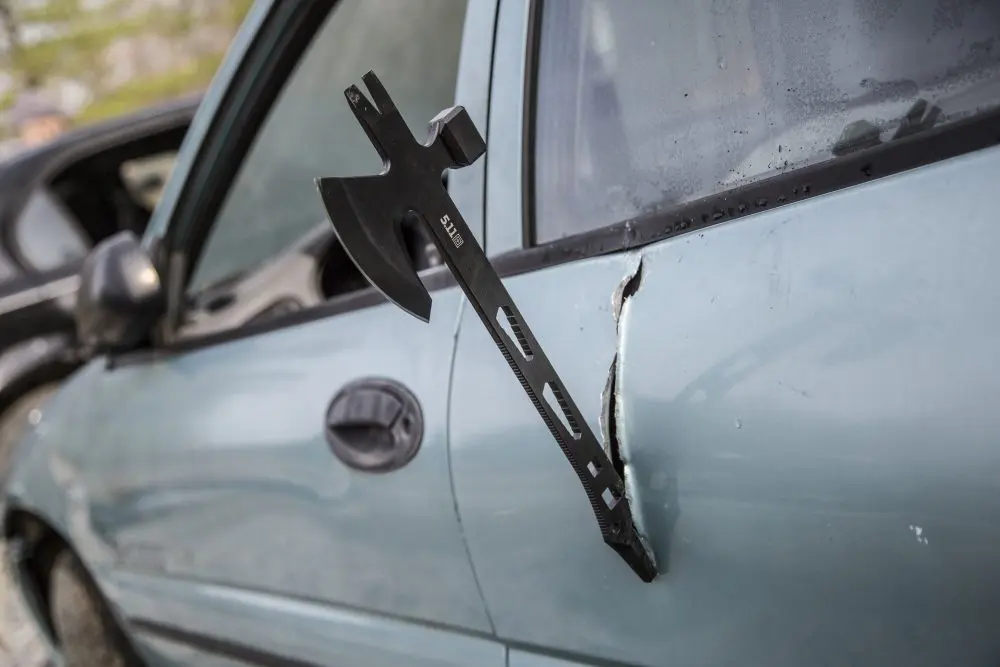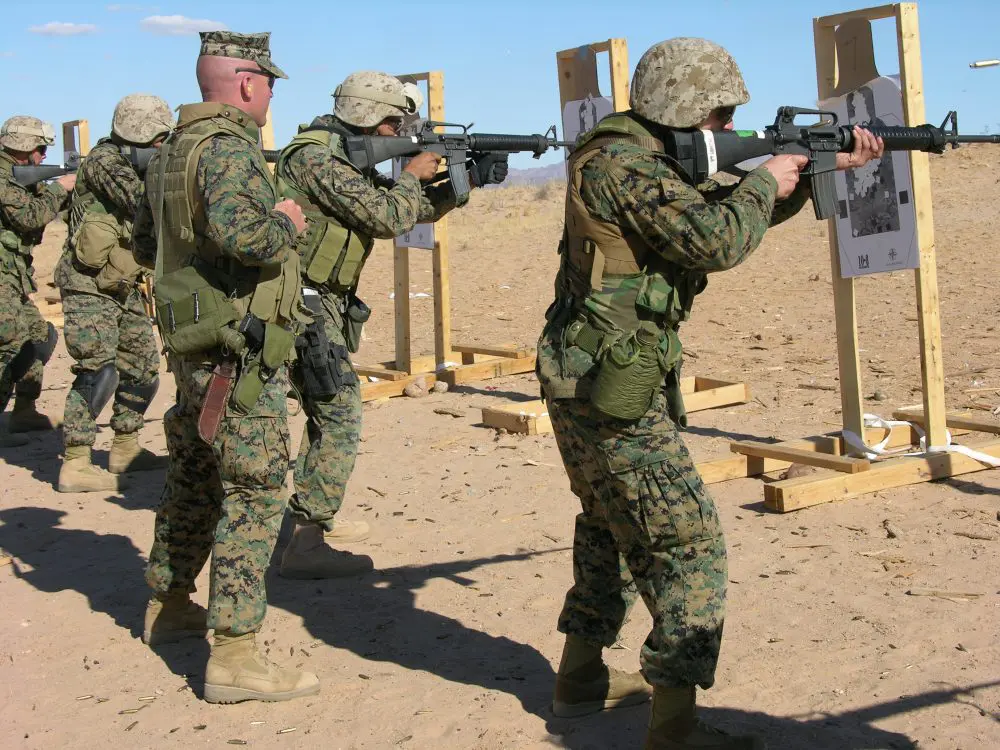I was taken to task on the internet some time ago for advocating the low ready position. To paraphrase: “I would not listen to anyone who advocates the low ready position…” Wow! I love these guys.
First, this was posted under a pseudonym. On the internet you are cloaked in anonymity, which is pretty much like yelling at someone and then hiding behind your mother’s skirt. Low ready is both viable and eminently applicable in field settings. If you’ve simply taken two classes or read a few books, I tend to question the validity of your opinion.
There are many variations of the low ready position. In fact, there are innumerable permutations of the low ready position. From an extreme low ready to a “standard” low ready, contact low ready, “high” low ready (I know), and everything in between.
Low ready is a contact position prior to a live-fire event. This position effectively allows for a single pure line to be employed should live fire be necessitated. It’s simple: A straight line is a straight line. It can’t be straightened any more than it is. If it is as short in its travel as is necessary for the situation, then it cannot be shortened any more. If you can find me a tire that is more perfectly configured than a pure circle, I will buy it. Straight is straight and round is round. How novel!

The low ready debate is somewhat akin to throwing out some absurd theories on how to enter through a doorway. Unless you can defy the laws of gravity, you are somewhat relegated to getting through an open portal in just so many ways.
I once observed two officers bent kneed, crouched down with pistols upraised in front of their faces with their full weight and backs positioned against a closed door. A third member kicked the door open and they fell backwards into the room and then rolled over, ready for action. They explained that no suspect would ever expect that. Sometimes there are simply no words!
I have been around for some time. There are currently all manner of new techniques vociferously espoused as the newest, latest, bestest ever, whazoo, frimping, frapping tactical mud flaps and whip antenna techniques and theories to ever come down the pike.
One theory is to index the pistol directly against the head in such a manner as to know precisely where the pistol is positioned in space. Wouldn’t you be somewhat aware of this fact as you are already holding the pistol in the first place? Just a question.
An often overlooked factor with tremendous validity is that at a low ready position, the weapon is oriented toward the lower extremities of those around you. Other techniques orient the weapon around the upper chest, neck and head area. The human condition can be flawed, by which I mean there are plenty of documented cases of officers negligently discharging rounds into one another. Sustaining a round in the lower region is perhaps more desirable than in the upper region.
I have utilized the low ready more times than I can remember. I have actually stopped bad guys from doing bad things. My partners have stopped bad guys from doing bad things. I have recovered guns, knives and other implements of destruction from bad guys when we confronted them with a few irrefutable facts: our pistols were out, our positions were set, and our tactics clearly indicated our intent.
If they didn’t comply, bad things would transpire. Surprisingly, the bad guys caught onto this salient fact in short order. They really did.
You see, when properly executed, low ready employs a single, pure vertical line directly onto target. There is no horizontal displacement. It is pure, short and clean.
Since the study of all things gunfighting and tactical has been beaten to death, there is a thirst for something “better and faster.” I get this. In some cases, certain theories and techniques have a bit of merit under certain conditions.
But much of it is merely slick ad spin from “hackers.” Low ready isn’t just “old school” philosophy. Would it not make sense, in a life-and-death situation, to employ the purest, cleanest and shortest lines possible to get the job done? I know lots of real-world good guys in some of the most highly tiered units in the world who use clean lines. Makes sense to me! Seems to make sense to them as well, and guess what? These guys are really lacing rounds downrange.
Throwing an unproven and patently absurd theory out there to see if it sticks can prove to be a flawed and even fatal approach to the whole argument when the stakes are very real.
It is one thing to criticize and quite another to prove that something else is better when common sense alone dictates that the former is straightforward and effective. Withdrawing a pistol back into the high chest area after each and every shot does not make sense to me when the threat is at a distance of four yards or closer. Weapon retention is one thing and low ready another. You cannot move fast enough to prevent me from simply rising up and striking you (multiple times if necessary). Try it yourself within a range setting.
The low ready is an invaluable tool. It pre-sets a pure lined resolution to a high-order event. It is uncomplicated. It is workable. It is learnable. It has an extensive and proven track record. Many suspects we confronted actually commented on the fact that they felt we were “ready” for them when confronted with a low ready position. When the very real bad guys issue statements to this effect, it tends to validate the overall issue.
There are times when the low ready would not be viable. Extremely tight quarters is one instance. Interposed objects or barricades that disallow the low ready position altogether is another. But overall, the low ready position shortens the distance, compresses the timeline, and renders one simple vectored line directly onto the target.
The low ready position is not “old school”—it is practical.
Scott Reitz is a 30-year veteran of the Los Angeles Police Department and director of the highly acclaimed International Tactical Training Seminars. Course information and schedules are available at their website at www.internationaltactical.com. Looking Back, a free monthly newsletter, is available by email at [email protected].




